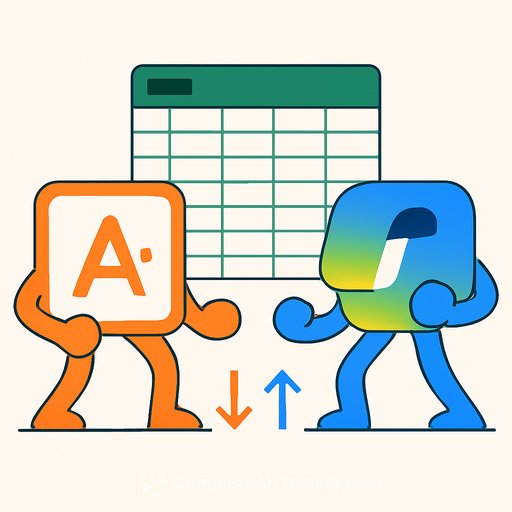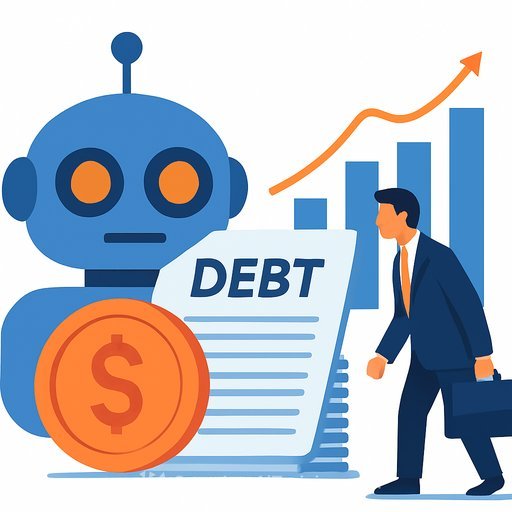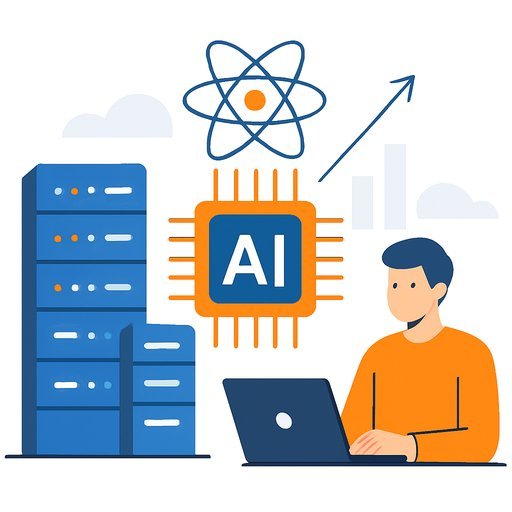Anthropic brings Claude to Excel: practical AI for finance teams
Anthropic is moving directly into finance workflows with Claude for Excel and deeper integrations across Microsoft's enterprise stack. Analysts can now work with Claude inside a spreadsheet, connect to live market data, and trigger pre-built workflows that handle the busywork most teams push to associates and analysts.
The message is simple: keep your models in Excel, add AI where you already work, and keep humans in control.
Why Excel is the center of gravity
Excel remains the primary workspace for valuations, scenarios, and audits. By embedding a smart assistant in the sheet itself, Anthropic removes context switching and reduces manual cleanup.
Claude for Excel runs in a sidebar and can read, analyze, modify, and create workbooks. It tracks what it changes, explains the logic, and lets users jump directly to referenced cells-reducing the "black box" risk that blocks adoption in finance.
What Claude can do inside spreadsheets
- Discuss model structure and fix broken formulas without breaking dependencies.
- Populate templates and build new models from scratch with clearly logged edits.
- Debug, refactor, and standardize sheets for handoffs and reviews.
Beyond Excel, select Claude models are available in Microsoft Copilot Studio and the Researcher agent, giving enterprises multiple on-ramps without rebuilding their stack.
Live data connectors: building a defensible data edge
Anthropic expanded its connector ecosystem to bring live, professional-grade data into Claude. New partners include:
- Aiera: Real-time earnings call transcripts and investor event summaries, plus access to expert interviews via Third Bridge.
- Chronograph: Private equity portfolio monitoring, valuations, and fund-level metrics.
- Egnyte: Governed access to internal data rooms, models, and investment docs.
- LSEG: Live fixed income, equities, FX, macro series, and analyst estimates.
- Moody's: Credit ratings, research, ownership, and company data on 600M+ entities.
- MT Newswires: Global multi-asset market and economy news.
Previously announced connectors include S&P Capital IQ, Daloopa, Morningstar, FactSet, PitchBook, Snowflake, and Databricks. Together, they cover fundamentals, pricing, credit, private markets, alternative data, and news-raising the quality of inputs that drive model outputs.
Pre-configured "Agent Skills" for the daily grind
Anthropic is packaging common analyst workflows into ready-to-run skills. These aren't generic prompts-they map to tasks you already assign to juniors.
- DCF builds: FCF projections, WACC, scenarios, and sensitivity tables.
- Comps: Valuation multiples and operating metrics with refreshable data.
- Data room extraction: Turn documents into structured Excel with financials, customers, and contract terms.
- Teasers and company profiles: For pitch books and buyer lists.
- Earnings analysis: Pull metrics, guidance shifts, and management commentary from transcripts and filings.
- Initiation reports: Industry framing, company deep dives, and valuation approaches.
On the Vals AI Finance Agent benchmark, Anthropic's Sonnet 4.5 scores 55.3%-state-of-the-art for analyst-grade tasks. That's capable enough to accelerate work, but still requires human review.
Proof points from marquee institutions
Clients include AIA Labs at Bridgewater, Commonwealth Bank of Australia, AIG, and Norges Bank Investment Management. NBIM reports roughly 20% productivity gains-about 213,000 hours-by querying Snowflake and analyzing earnings calls more efficiently.
AIG cites a >5x faster review timeline in early rollouts, with data accuracy improving from 75% to over 90%. These are production deployments, not pilots.
Risk, regulation, and why "human in the loop" matters
U.S. oversight is in flux. Earlier federal guidance around adverse action notices and bias testing shifted with changing enforcement priorities, while states continue to act.
One recent example: the Massachusetts Attorney General reached a $2.5M settlement with Earnest Operations over alleged disparate impact in loan approvals and terms. Details here: Massachusetts AG press release.
Analysts and risk teams should expect more state-level activity even if federal rules ease. For a broader view on U.S. AI policy shifts, see Brookings.
Anthropic's stance is clear: keep a human in the loop. The company trains clients on model limits, sets guardrails, and avoids autonomous decisioning or blind stock calls.
Competition and go-to-market
Every major player is targeting finance: Microsoft, OpenAI, Google, and banks building in-house assistants. Specialist models like BloombergGPT signal a mixed market of general and domain-specific systems.
Anthropic's approach sits in the middle: general-purpose models plus finance tooling, connectors, and workflows. Partnerships with Deloitte, KPMG, PwC, Slalom, TribeAI, and Turing help with deployment and change management.
What finance leaders are worried about
CFOs still flag hallucinations, reconciliation issues, and cascading errors as top risks. Boards are responding with responsible use policies, governance frameworks, developer training, and periodic audits.
The trade-off is clear: adopt thoughtfully to capture efficiency, or lag peers who lock in compounding gains.
How to pilot Claude for Excel without creating risk
- Start with contained use cases: comps refresh, transcript analysis, data room extraction, and model QA.
- Keep human sign-off: require reviewer approval for outputs used in IC memos, risk models, or client deliverables.
- Turn on auditability: log prompts, file versions, and cell-level changes for SOX and model risk reviews.
- Limit data access: use role-based permissions across Egnyte/Snowflake; isolate PII and sensitive fields.
- Bias testing: for lending/underwriting, run disparate impact checks and stress tests across protected classes.
- Train your team: prompt patterns, red-team drills, and failure-mode checklists reduce rework and surprises.
What to watch next
- Deeper Excel control: faster formula refactors, cross-sheet lineage, and dependency-aware edits.
- Broader data coverage: more alternative data and private markets depth.
- Tighter controls: native policies for privileged data, approval flows, and automated audit artifacts.
- Benchmarks: steady gains on analyst-grade tasks with clear error reporting.
Bottom line
Claude's Excel integration, live data connectors, and ready-to-use skills reduce friction where finance actually works. The tech is strong enough to speed up real tasks today-as long as teams keep oversight, logging, and access controls in place.
If your models drive capital allocation, treat AI like a high-output analyst: fast, thorough, and always reviewed.
Helpful resources
Your membership also unlocks:





